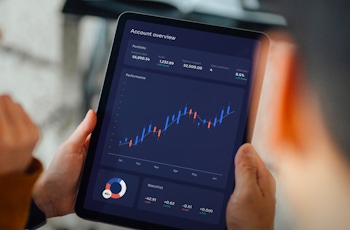
Know your limits – Pension and ISA allowances FAQs
As the end of the 2024/25 tax year approaches, we answer common questions on pension and ISA allowances.
As we reach the end of the 2024/25 tax year, advisers will naturally be considering tax year end planning. Using each tax year’s available allowances and reliefs – within the limits of affordability – will put clients in the best possible position when they retire or access their investments. A good understanding of tax relief and allowances is key. To support you with this, we have summarised our most frequent questions and answers.
Members can get tax relief on their own contributions up to the greater of 100% of their relevant UK earnings in that tax year or £3,600 gross if their earnings are lower than this. All personal and third-party contributions count towards this limit, but employer contributions do not.
Relevant UK earnings includes salary, wages, P11D benefits in kind and net trading profits. Pension income, interest and dividends do not count as earnings. In most cases, rent does not count as relevant UK earnings – although there is currently an exception for some furnished holiday lettings which ends in tax year 2024/25.
The earnings for a tax year can only support tax relief on personal and third-party contributions in that same year. They cannot be carried forward or back, so if they are not used they are lost at the end of the tax year.
The annual allowance is the total amount of pension savings a member can make or benefit from in a tax year before an annual allowance tax charge claws back the excess tax relief the member benefitted from. The charge is at the member’s marginal rate of income tax, but at a minimum of 20%.
For defined contribution pensions, the amount assessed against the annual allowance is the total of member, employer and third-party contributions made in a tax year.
For defined benefit schemes, the amount assessed is the pension accrual for the tax year. The scheme administrator will inform the member via a pension savings statement after the end of the tax year. For details of how it’s calculated see HMRC’s Pensions Tax Manual.
There are now three categories of annual allowance: the standard annual allowance, the tapered annual allowance, and the money purchase annual allowance. See further questions below for details of each.
From 2016/17 onwards, pension input periods always run from 6 April to the following 5 April. Contributions and accrual are tested against the annual allowance of the tax year in which they are paid.
Most people get the standard annual allowance, which is £60,000. When the standard annual allowance applies, a member’s available annual allowance for the current tax year will normally include any unused annual allowance carried forward from the three previous tax years.
Personal and third party contributions are still subject to the earnings requirements irrespective of how much annual allowance the member has available.
The tapered annual allowance (TAA) is a reduced annual allowance that applies to very high earners. Whether the TAA applies for a tax year depends on the individual’s ‘threshold income’ and ‘adjusted income’ for that tax year. It is possible to use carry forward when the TAA applies.
In 2024/25, the TAA affects those with threshold income above £200,000 and adjusted income is over £260,000. In simplified terms:
- Threshold income is taxable income (which may already have been reduced by contributions to a net pay scheme) less relief at source pension contributions. Anti-avoidance provisions mean that new salary sacrifice arranged from 8th July 2015 is also added back to threshold income
- Adjusted income is taxable income (with any net pay contributions added back in) plus employer pension contributions.
If the TAA applies in 2024/25, the standard £60,000 annual allowance is reduced by £1 for every £2 that adjusted income exceeds £260,000. The minimum TAA is £10,000 – which applies once adjusted income reaches £360,000.
The TAA thresholds have changed many times since being introduced in 2016/17. For carry forward purposes, the available allowance is as calculated using the thresholds that applied during that year, so each carry forward year may have to be calculated separately.
For more details see HMRC’s Pensions Tax Manual or use our Carry Forward Calculator.
The money purchase annual allowance (MPAA) is £10,000 in 2024/25. It applies from the date a member receives ‘flexible income’ from one of their pensions. The provider will inform the member when this happens. Once the MPAA has been triggered, it applies indefinitely and carry forward cannot be used for funding defined contribution schemes. However, it may be possible to take advantage of the standard annual allowance before triggering the MPAA.
If the member has triggered the MPAA, it does not apply to pension accrual within a defined benefit (DB) scheme. It also remains possible to use carry forward in respect of DB accrual.
The MPAA is typically triggered by taking an uncrystallised funds pension lump sum (UFPLS) or receiving flexi-access drawdown income. It’s not triggered if the member has taken only tax-free cash or if they purchase a standard annuity. For full details see HMRC’s Pensions Tax Manual.
Carry forward of unused annual allowance is available with the standard and tapered annual allowances. It is not available for defined contribution savings once the money purchase annual allowance has been triggered.
Carry forward sweeps up the unused annual allowances of the three previous tax years, provided that the individual was a member of a registered UK pension scheme in those years (see next question).
It can be more complicated to calculate available carry forward if a member has taken advantage of this in the past. Support with this is available via our carry forward calculator.
The annual allowance is the total amount of pension savings a member can make or benefit from in a tax year before a tax charge arises.
Clients don’t have to apply for carry forward. If the client is eligible and has exceeded this year’s annual allowance, any unused annual allowance from the previous three tax years is carried forward automatically. To be eligible, the client must have been a member of a registered UK pension scheme in the tax year(s) they are carrying forward from. In addition to active membership, deferred and pensioner membership of a defined benefit scheme and paid up membership of a defined contribution scheme also counts for this purpose.
If the client exceeds their annual allowance – whether the standard, tapered or money purchase annual allowance – plus any available carry forward, they must notify HMRC via self-assessment before the end of January following the end of the relevant tax year. The annual allowance tax charge must normally be paid by the self-assessment deadline. An extension applies to mandatory scheme pays, but not voluntary scheme pays.
If the member meets the requirements for ‘mandatory scheme pays’ they can ask their scheme to pay the charge from their pension benefits. To be eligible the member must have an annual allowance tax charge of at least £2,000 and have contributed or accrued at least £60,000 in that tax year to the scheme in question. In addition, the member must notify the scheme by 31st July in the year following the year in which the relevant tax year ends and must include details of the annual allowance excess in their self-assessment tax return. Mandatory scheme pays only covers tax charges relating to pension input exceeding £60,000.
If a member doesn’t meet the mandatory scheme pays requirements, a scheme can choose whether to offer voluntary scheme pays.
Many members are unable to make full use of their annual allowance because they are only entitled to tax relief on personal contributions up to their relevant UK earnings for the tax year. There is no concept of carry forward in relation to earnings or the £3,600 de minimis limit.
Individuals who operate their own limited companies and pay themselves in a mix of low salary plus dividends can usually get around this restriction by making employer contributions.
If the client is a very high earner or the money purchase annual allowance applies, it’s likely that the annual allowance will be the limiting factor to their ability to contribute rather than their relevant UK earnings.
Yes, you pay no Income Tax on any interest or dividends received from an ISA. Any profits are free from Capital Gains Tax.
The annual subscription allowance for savings into ISAs is £20,000. This the maximum amount that can be saved into all types of ISAs during the tax year that runs from 6 April to the next 5 April.
Of this amount no more than £4,000 can be saved into Lifetime ISAs each tax year.
You can pay up to £20,000 into a cash ISA or stocks and shares ISA during the tax year, however any amounts you pay will count towards your overall ISA allowance so will restrict what you can pay into other types of ISA.
No, in most cases, you can only pay into one of each type of ISA in a tax year. Therefore, you can pay into one cash ISA and one stocks and shares ISA but you cannot pay into two cash ISAs or two stocks and shares ISAs in a single tax year. The ISA transfer process may allow you to transfer your current ISA to a new provider. See question below.
If you transfer your ISA to another provider this does not count as opening a new one. Therefore, you can transfer to a new provider and pay money into your new ISA even if you had already saved into the old ISA in the current tax year.
This information is for UK financial adviser use only and should not be distributed to or relied upon by any other person.
Every care has been taken to ensure that this information is correct and in accordance with our understanding of the law and HM Revenue & Customs practice, which may change. However, independent confirmation should be obtained before acting or refraining from acting in reliance upon the information given.











































































